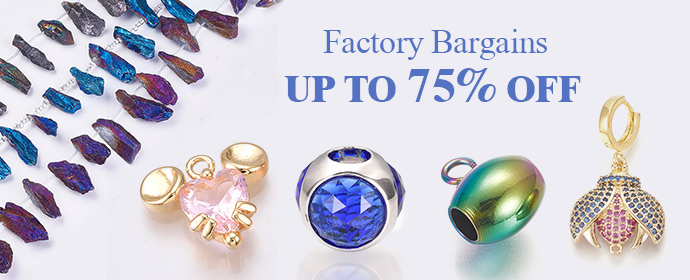What are Ruby Stones and How are They Valued?
Ruby stones are gemstones known for their rich red color and exceptional hardness. They are a variety of the mineral corundum, with the red color being caused by the presence of chromium within the crystal structure. Rubies have been highly valued and popular for centuries due to their rarity, beauty, and symbolism.
When it comes to valuing ruby stones, diverse elements are taken into contemplation:
Color:
One of the most important elements in establishing a ruby’s worth is its color. The purest, brightest red color—often referred to as “pigeon’s blood” red—is found in the best rubies. Secondary colors like purple or orange may have an impact on the value.
Clarity:
The lack of internal defects or inclusions inside the ruby is referred to as clarity. The clarity grade and, thus, the value is higher the less numerous and obvious the inclusions are.
Carat Weight:
The carat weight, or size, of the ruby, might affect its value. In general, larger rubies are more precious and rarer than smaller ones of the same grade.
Cut:
A ruby’s cut describes its faceted and shaped construction. The color and brightness of a well-cut ruby are enhanced. Oval, round, and cushion cuts are standard forms, but distinctive and personalized cuts can also add value.
Certification:
A ruby’s value may be affected by reputable gemological certificates, such as those from the GIA or AGS, which offer an unbiased evaluation of a ruby’s quality and authenticity.
Origin:
The value of a ruby can be affected by where it was mined. The production of rubies of extraordinary quality and color is known to come from several sources. For instance, Mozambique and Burma (Myanmar) have traditionally produced some of the most valuable rubies.
Treatment:
Heat treatment is frequently used on rubies to enhance their color and clarity. Heat therapy is a common method that is universally acknowledged. Rubies, especially those of fine grade, attract higher prices when not treated or heated.

Caring for Your Ruby Stone: Maintenance Tips and Best Practices
Caring for your ruby stone is essential to maintaining its beauty and longevity. Here are some maintenance tips and best practices:
Cleaning: Regularly clean your ruby stone using warm, soapy water and a soft brush. Rinse it thoroughly and pat it dry with a soft, lint-free cloth.
Remove your ruby jewelry before using any cleaning products or engaging in activities that involve chemicals.
Protect your ruby from physical impact and extreme temperatures.
Rubies are durable gemstones but can still chip or crack if subjected to rough handling or sudden temperature changes.
Periodically, have your ruby jewelry inspected by a professional jeweler. Promptly address any issues to prevent further damage or loss of the stone.
Note: If your ruby jewelry requires repair or resizing, always seek the services of a reputable jeweler with experience handling gemstones. Improper repair techniques can damage the stone or affect its value.
Best practices:
Insurance: Consider insuring your ruby jewelry to protect it against loss, theft, or damage. Contact your insurance provider to understand the coverage options available for your valuable jewelry pieces.
By following these care tips and best practices, you can ensure that your ruby stone remains beautiful and well-maintained for years to come.
The Ethics of Owning a Ruby Stone:
Whenever buying a ruby stone, it becomes essential that one thinks about the ethical elements linked with its collection and trade. Deliberations to make sure your ruby stone adheres to moral guidelines
Responsible Sourcing: It is important to understand the origin of your ruby stone and ensure that it has been ethically sourced. They should be able to provide information about the mine or country of origin and assure you that the stone was obtained in an environmentally and socially responsible manner.
Conflict-Free: Ensure that your ruby stone is conflict-free, meaning it has not been used to finance armed conflicts or human rights abuses. Reputable jewelers adhere to ethical standards and support the Kimberley Process, which aims to prevent the trade of conflict diamonds.
Fair Trade: Fairtrade practices ensure that miners and workers involved in the gemstone supply chain are treated fairly, paid fair wages, and work in safe conditions. Supporting fair trade helps promote sustainable livelihoods for those involved in the industry.
Environmental Impact: Ruby mining, like any other form of mining, can have environmental consequences. This includes supporting companies that employ responsible mining techniques, such as land rehabilitation and environmental restoration.
Certification: opt for a ruby stone that comes with a reputable gemological certification, such as GIA (Gemological Institute of America). These certifications assure that the stone has been evaluated by independent experts who uphold strict standards of quality and ethics.
By regarding these ethical characteristics, you can ensure that your ruby stone aligns with your values and supports responsible practices within the gemstone industry.
Conclusion:
In conclusion, beyond its aesthetic appeal, responsible ownership of a ruby stone requires considering the ethical aspects of its sourcing and trade. Whether you are drawn to the ruby for its beauty, symbolism, or historical significance, owning a ruby stone is a cherished connection to nature’s enduring splendor.
Recommend0 recommendationsPublished in Uncategorized




